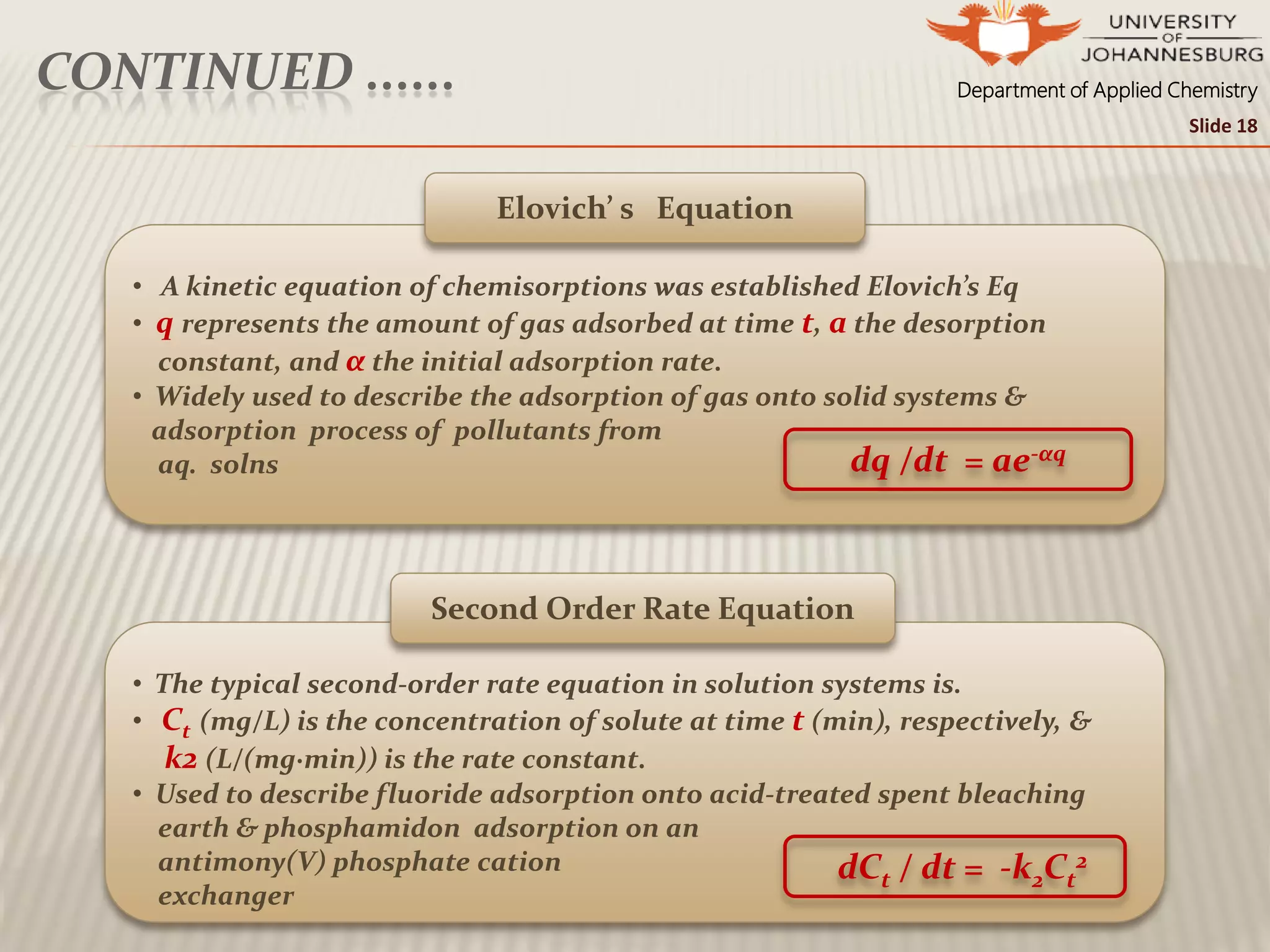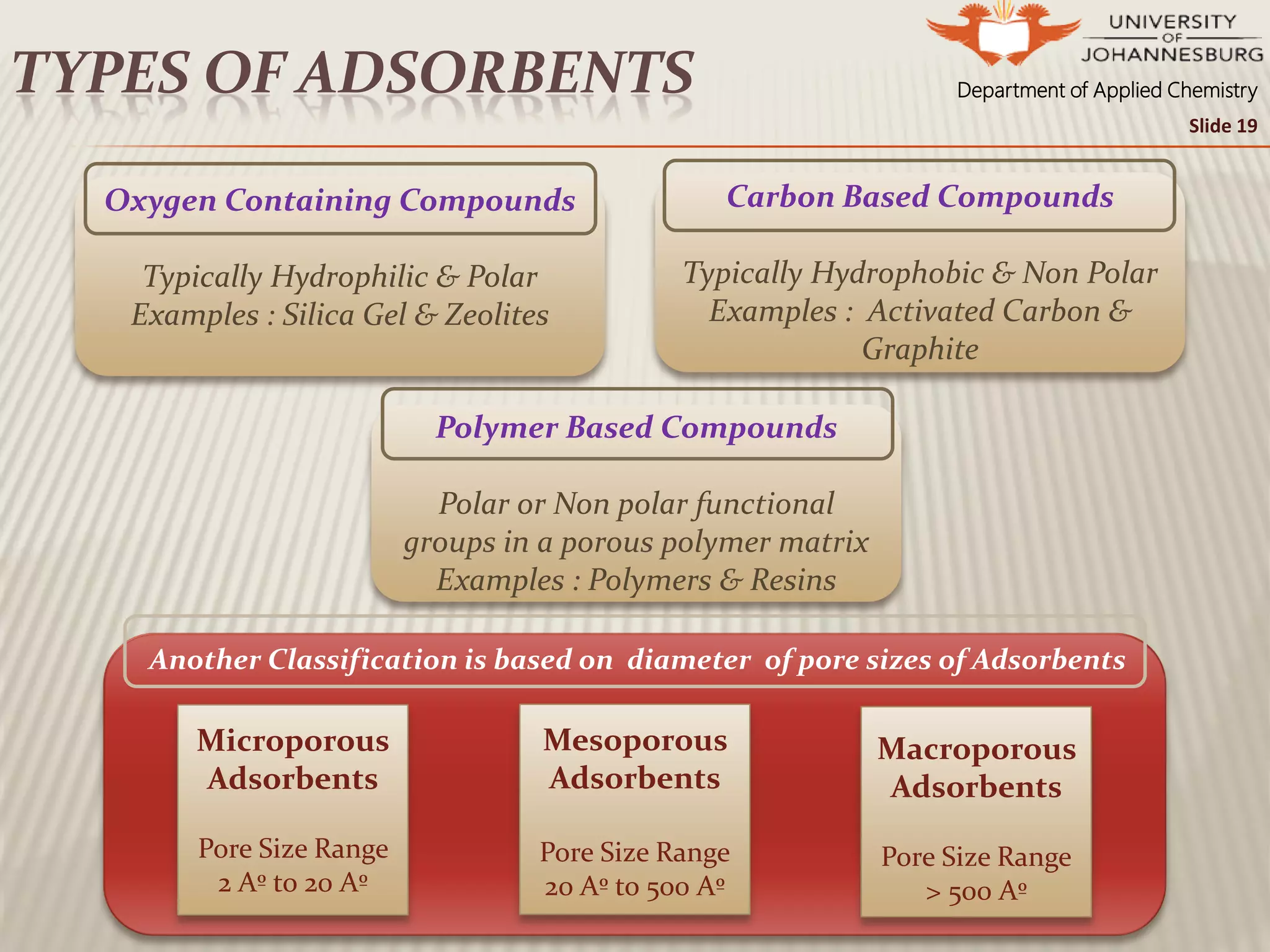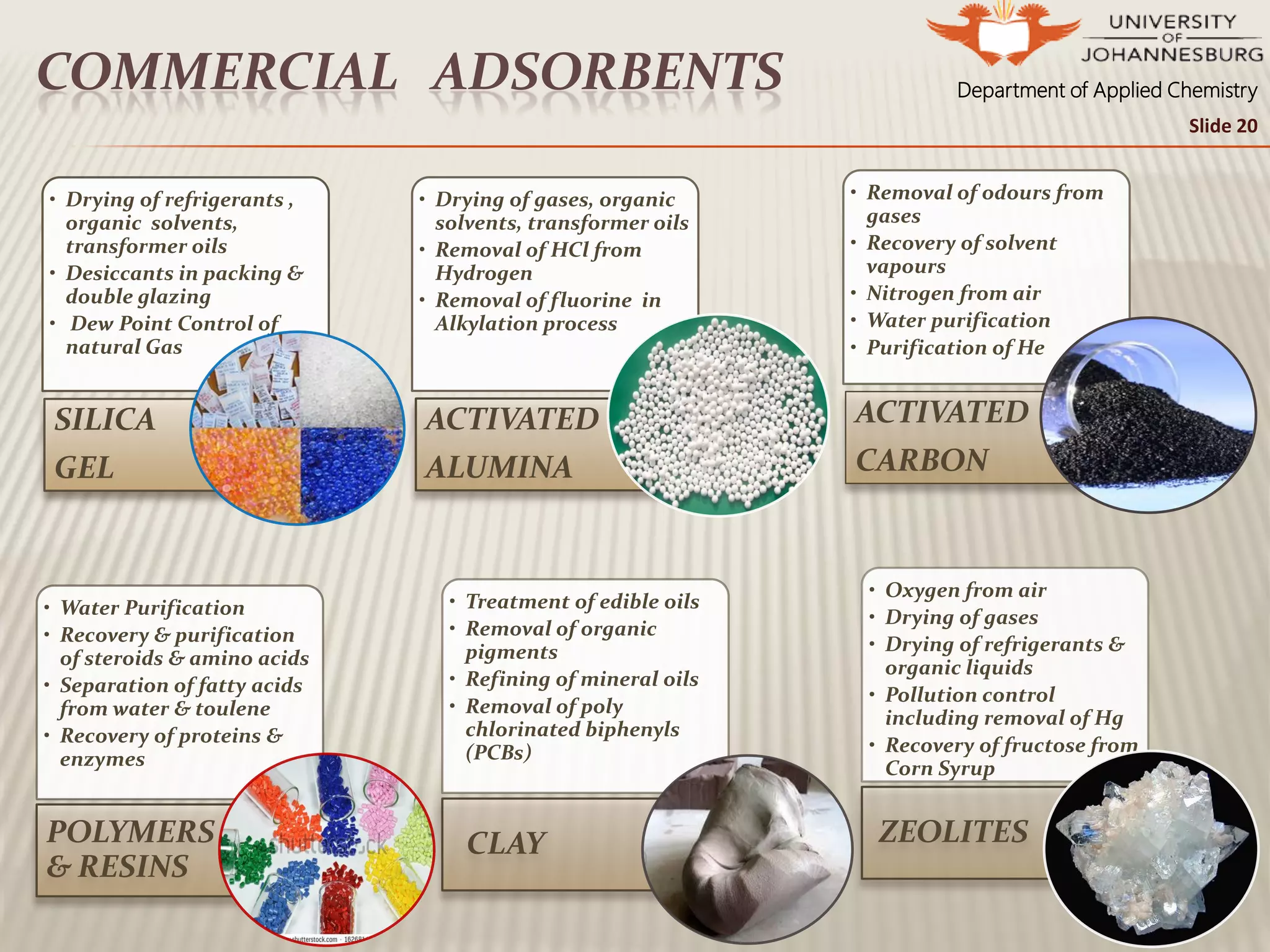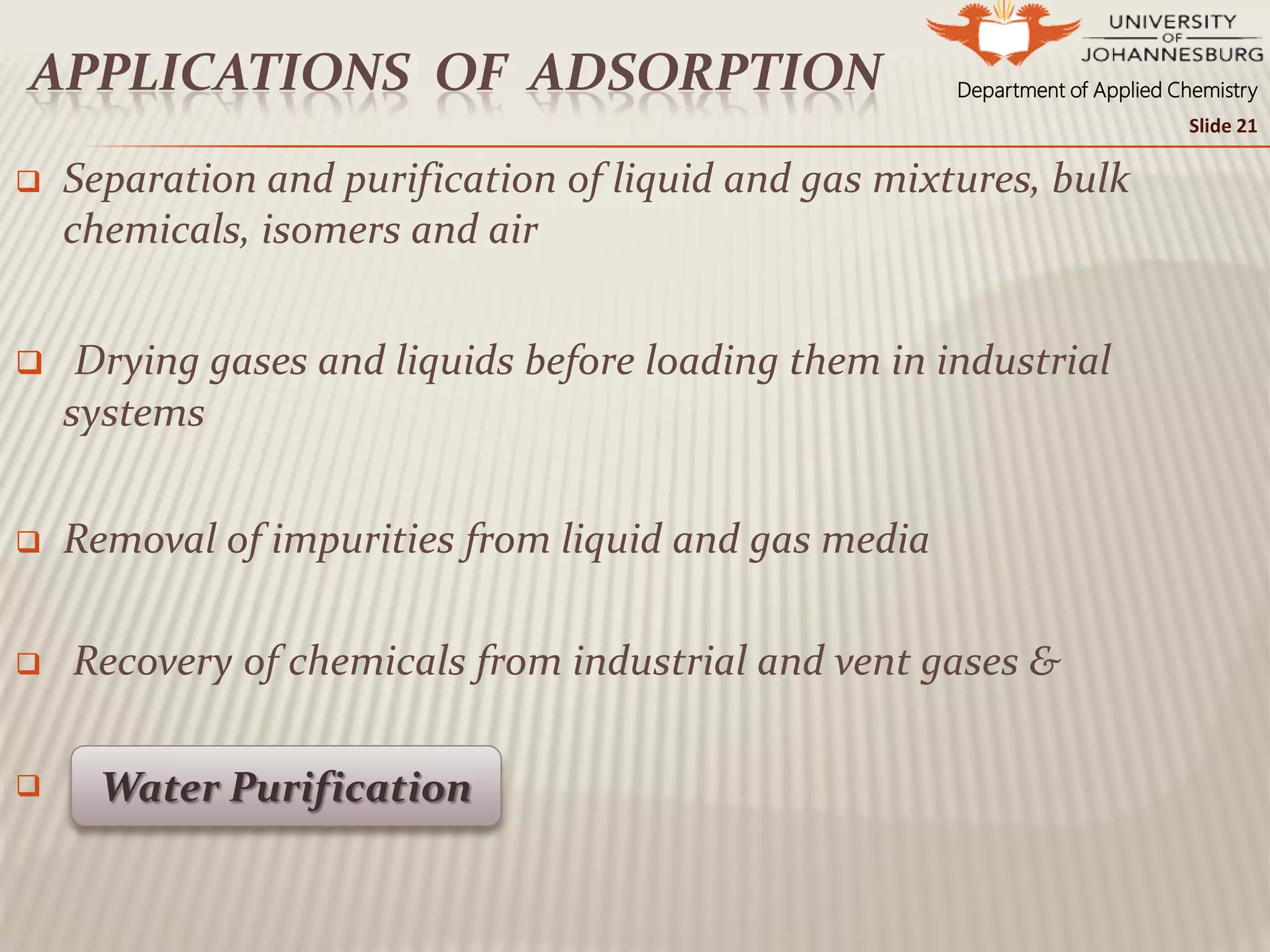The document presents a comprehensive overview of adsorption, covering its basic principles, types (physisorption and chemisorption), factors affecting adsorption, adsorption isotherms, and kinetics. It describes key models such as Freundlich, Langmuir, and BET, as well as various applications and commercial adsorbents. Additionally, it discusses thermodynamics associated with adsorption processes, emphasizing the exothermic nature and spontaneous conditions.
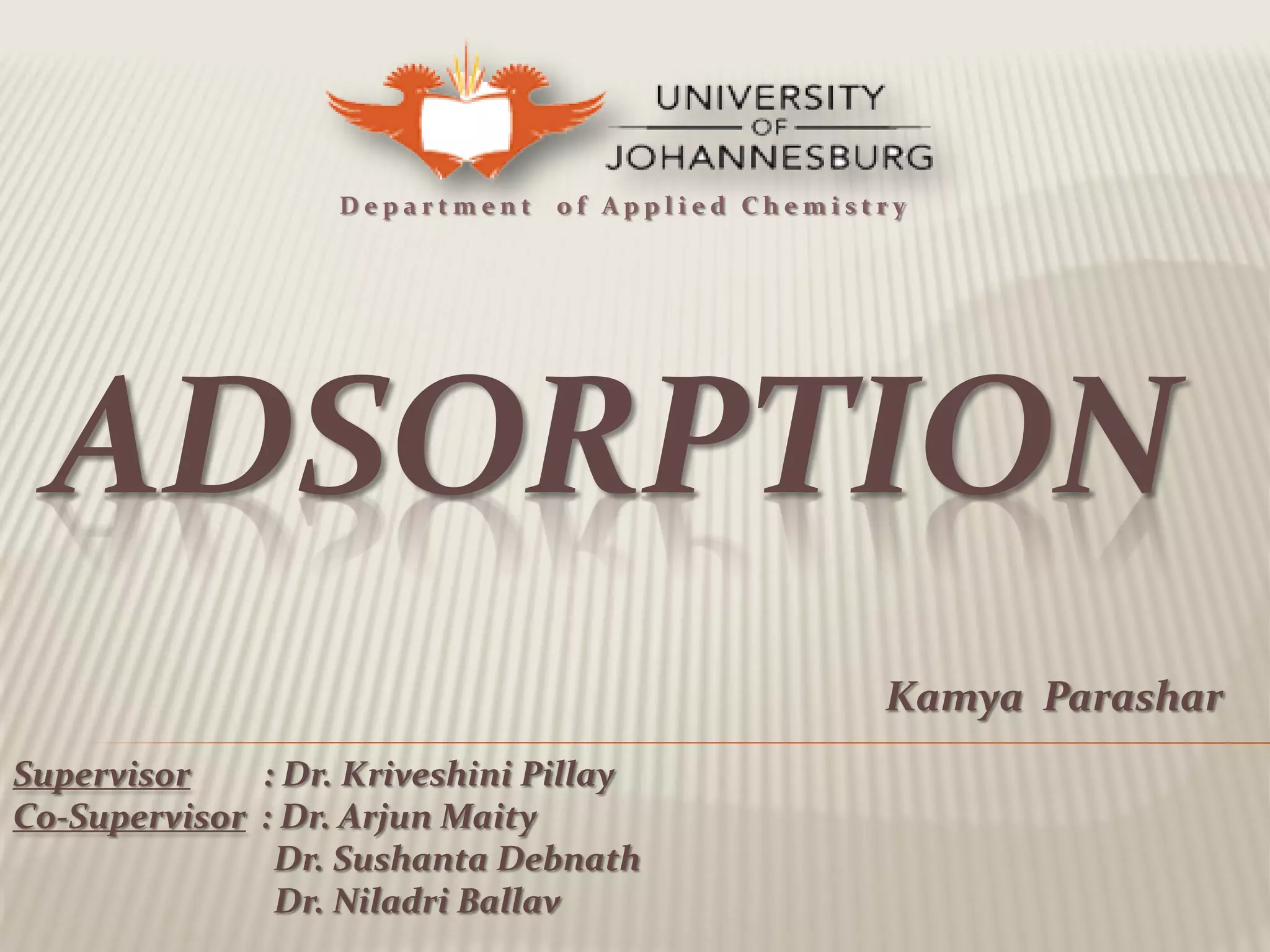
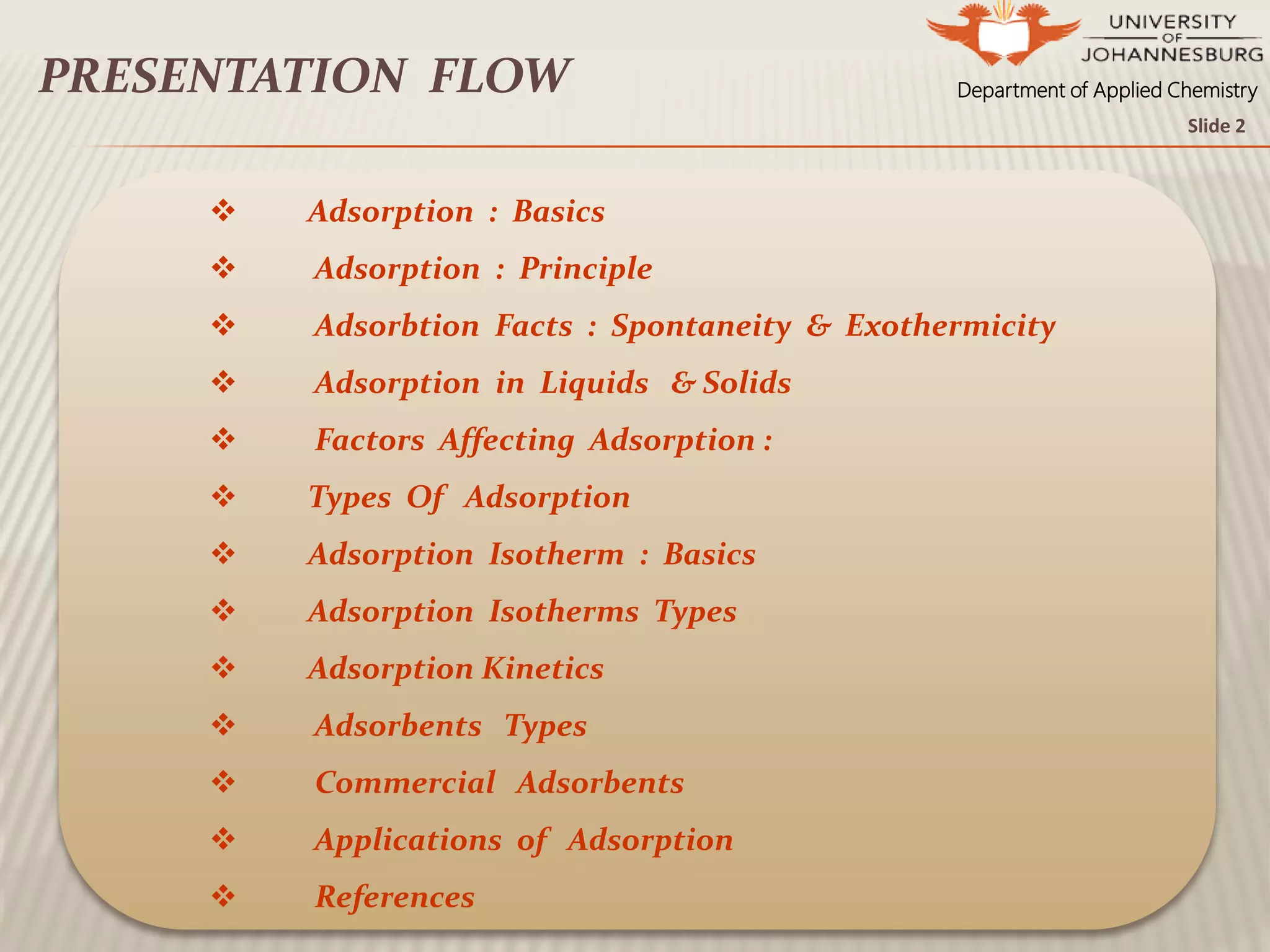
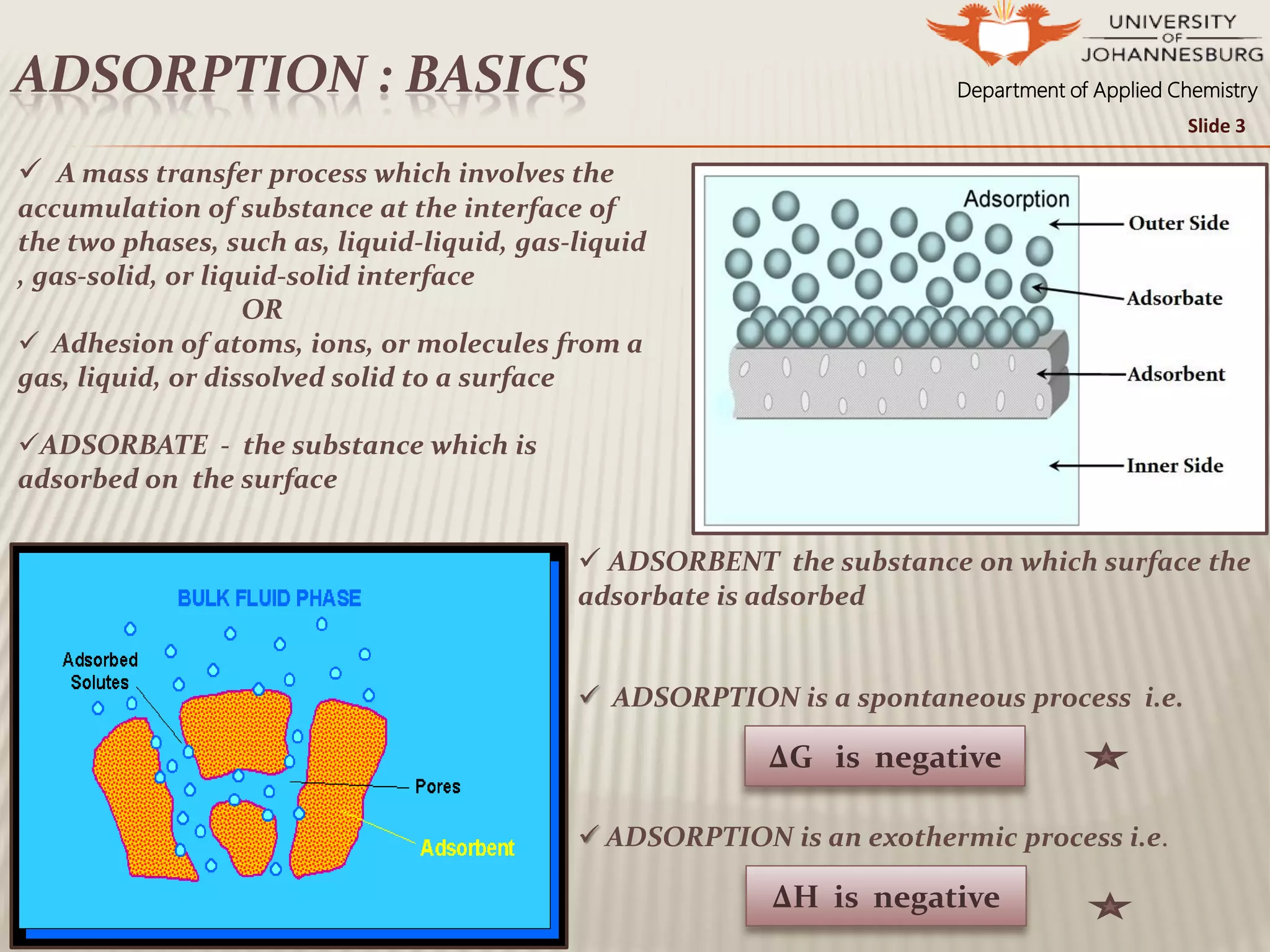

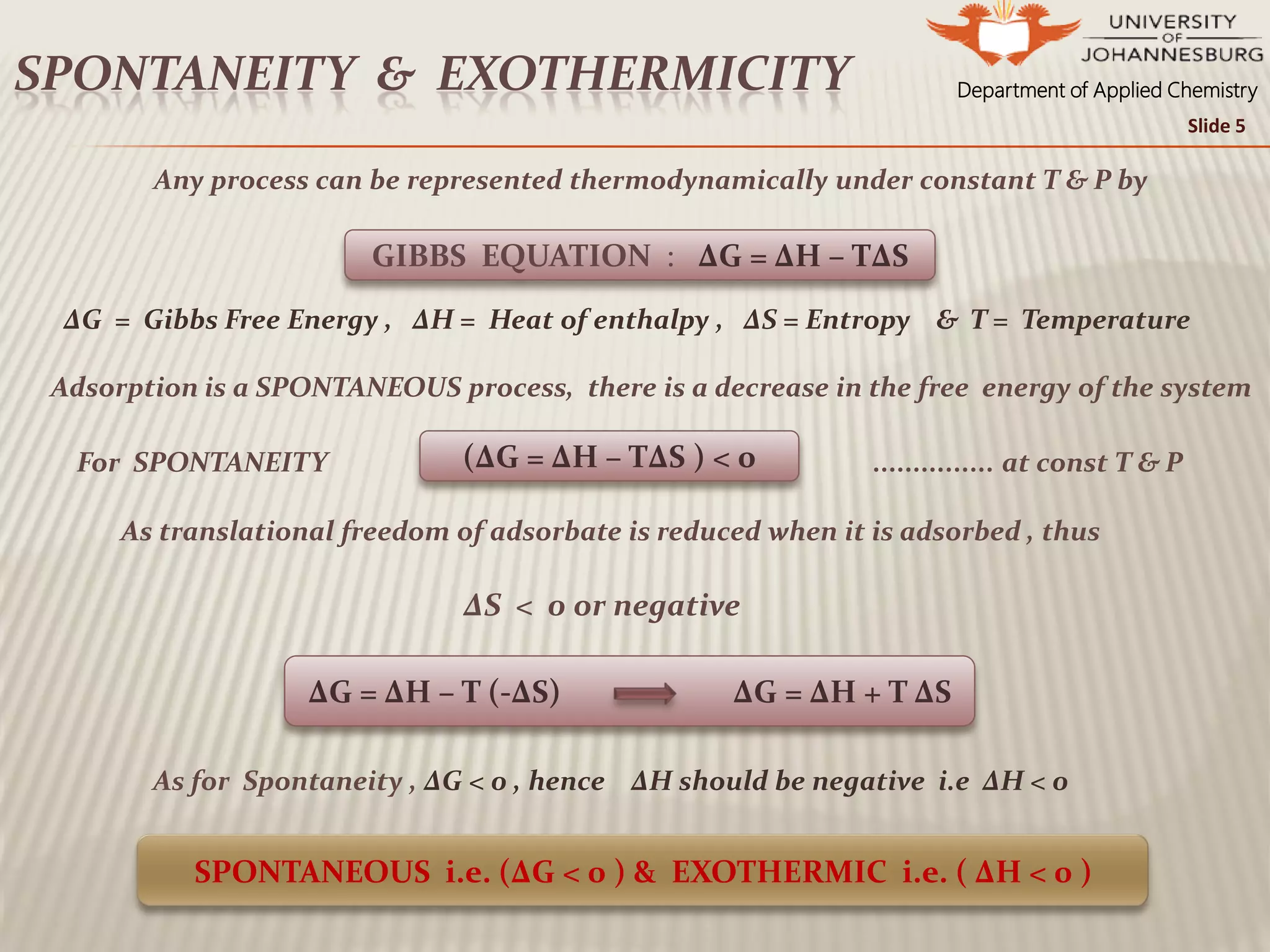
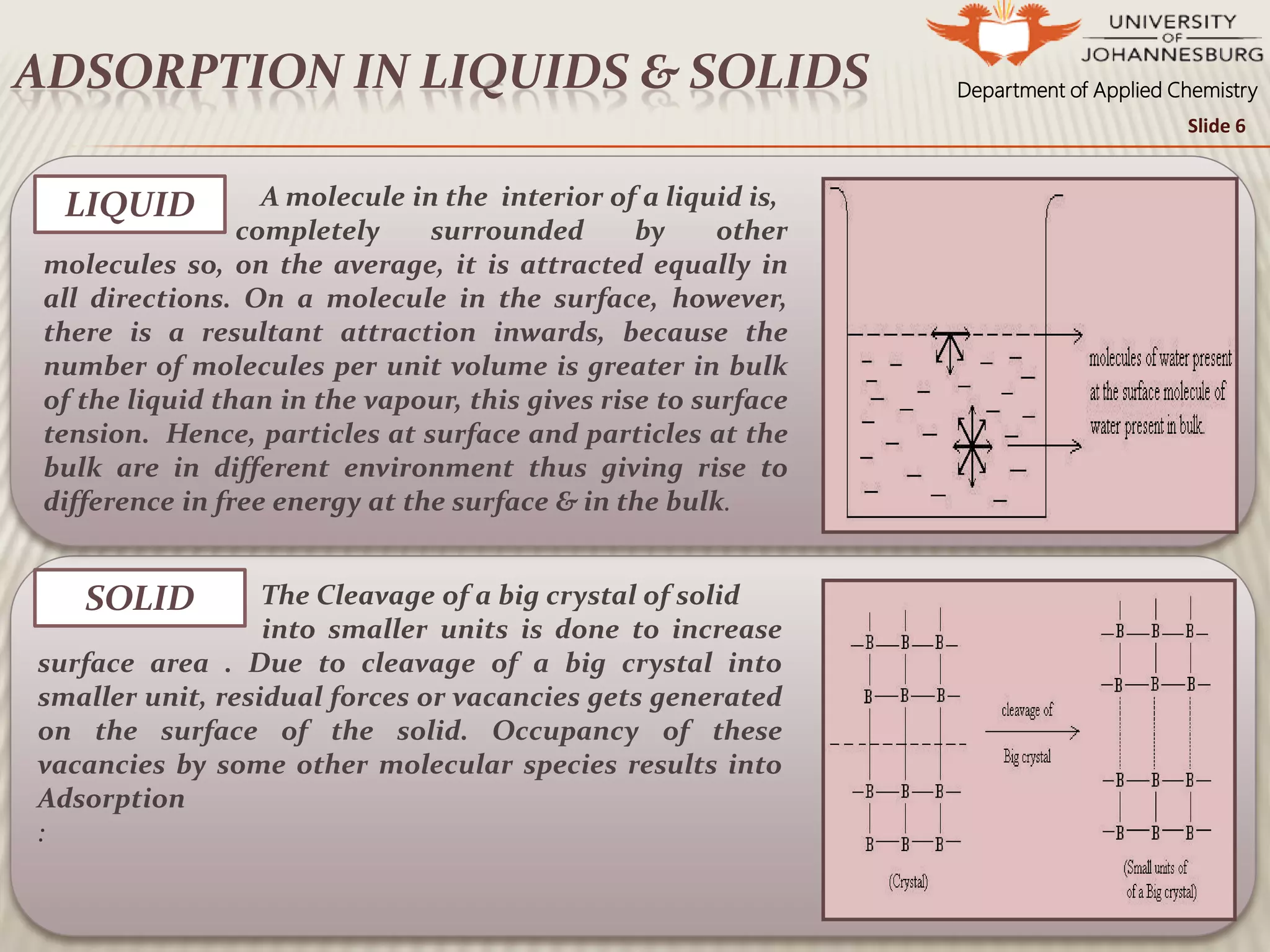
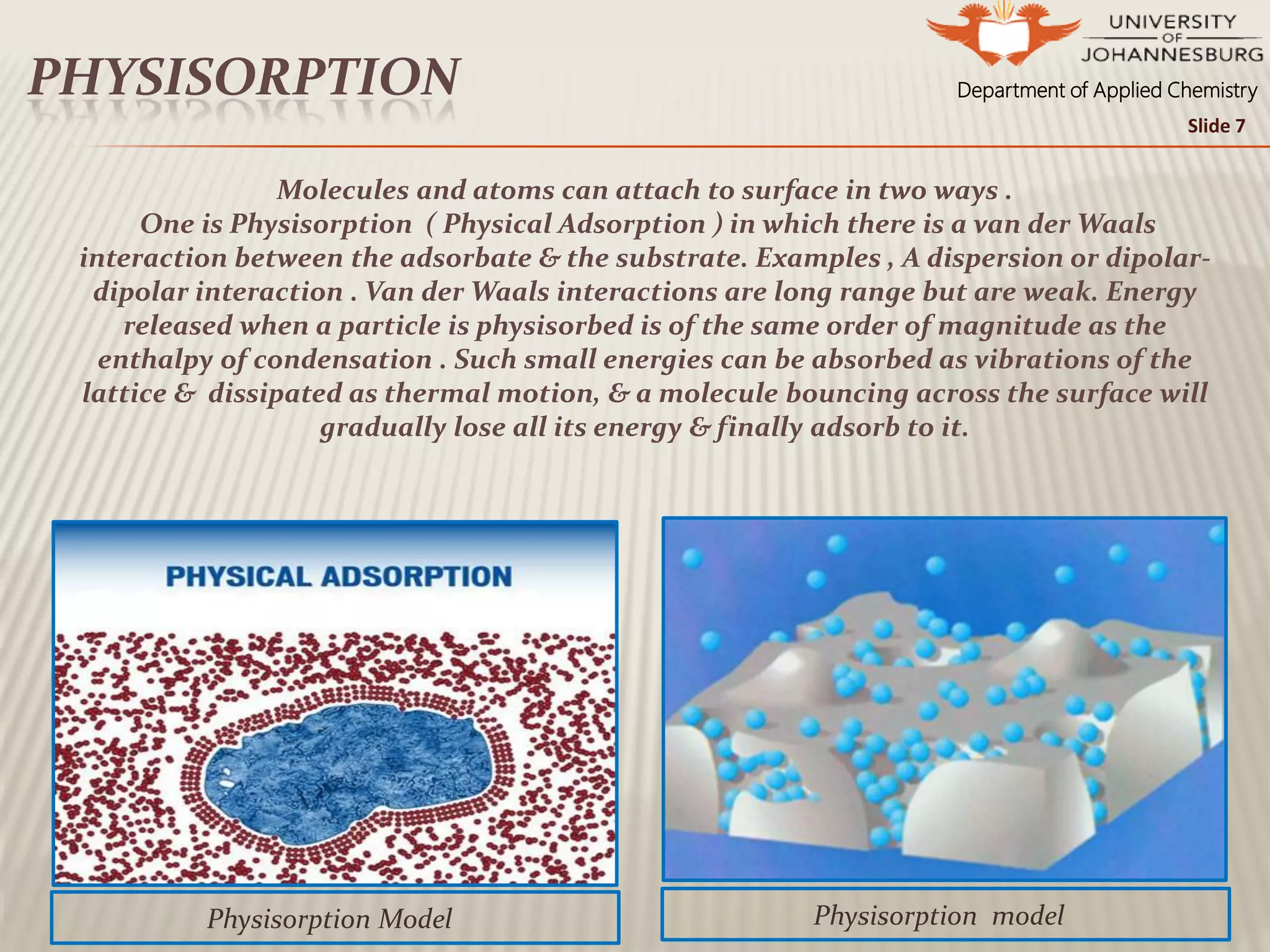
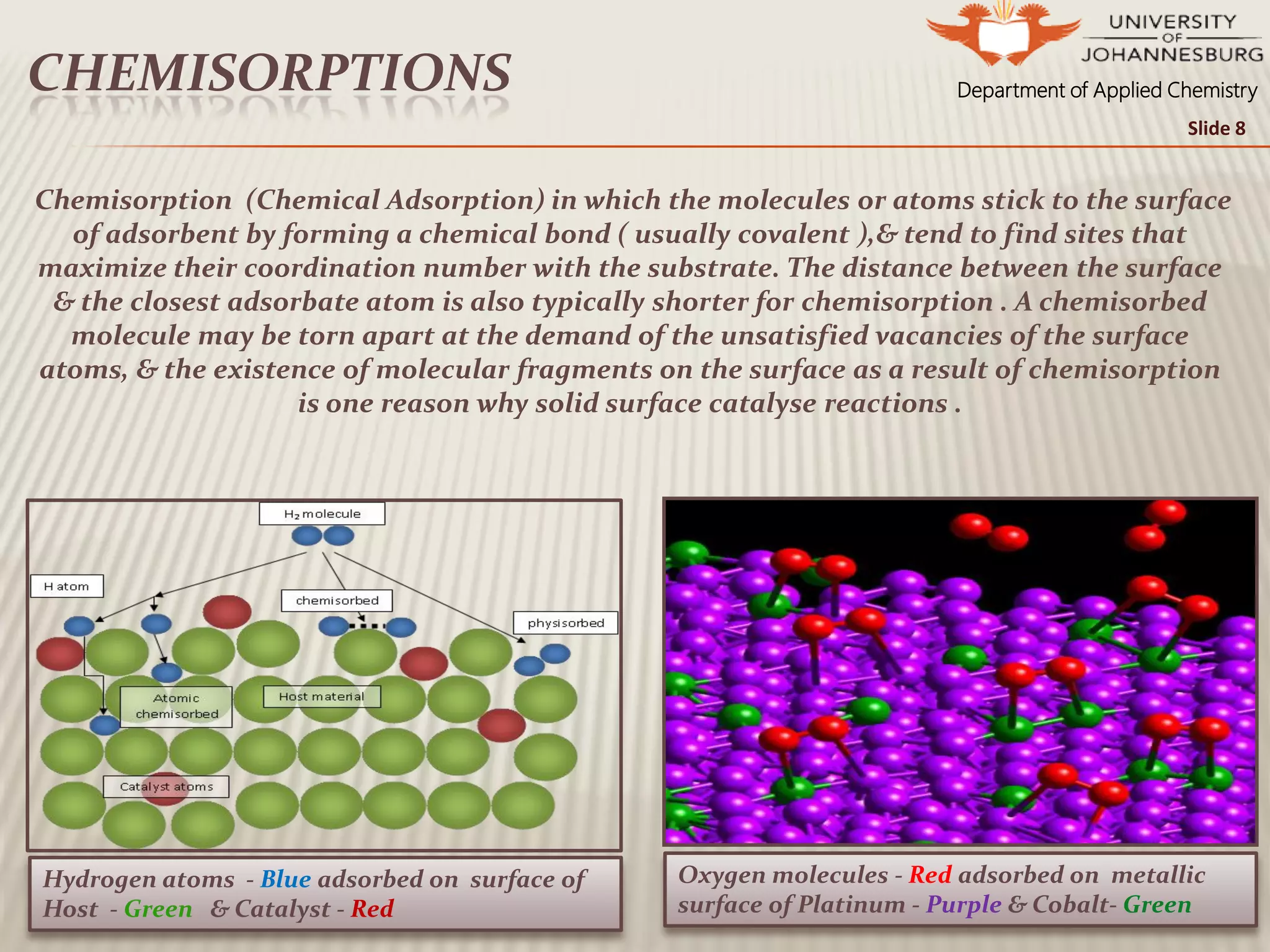
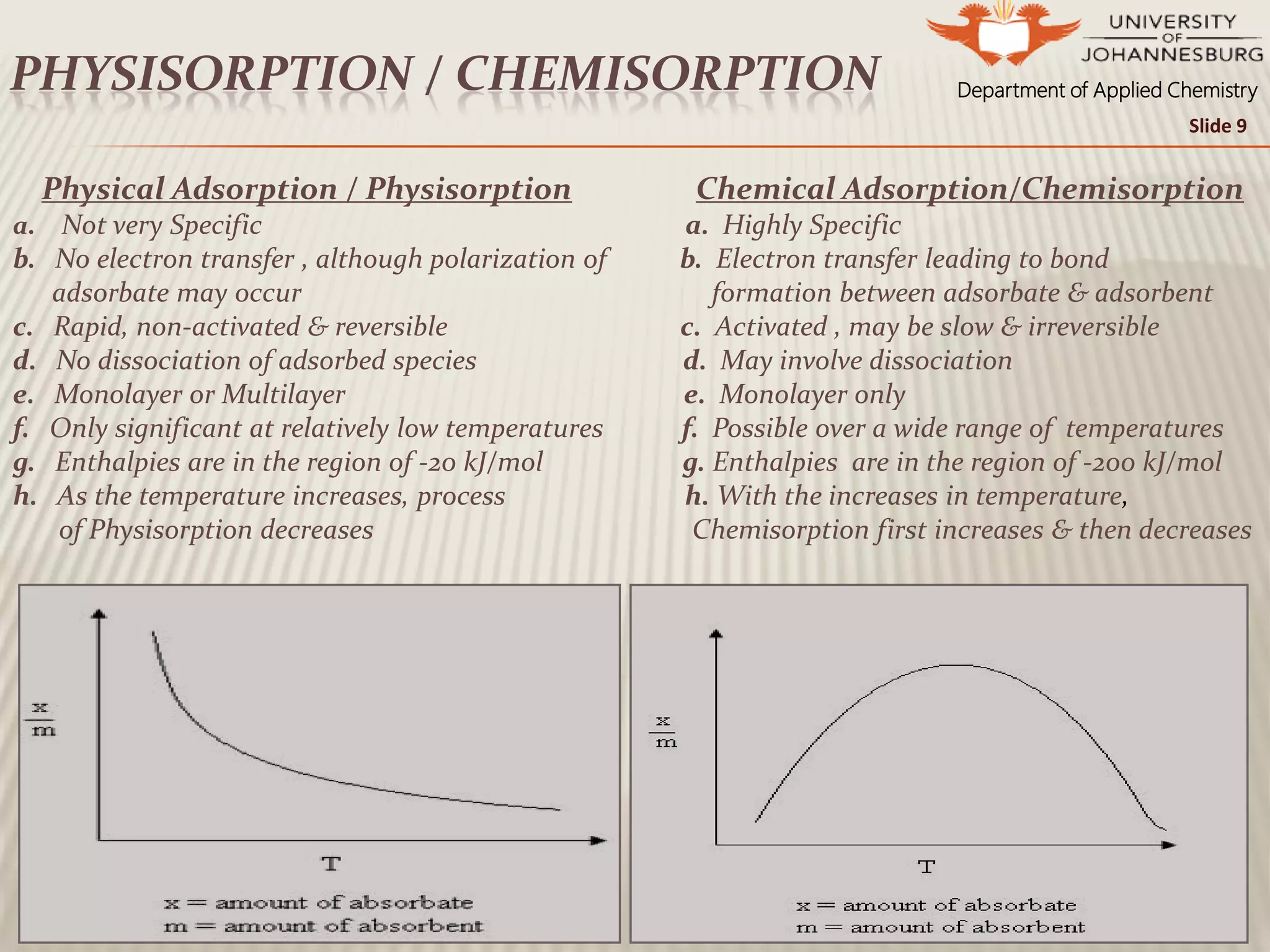
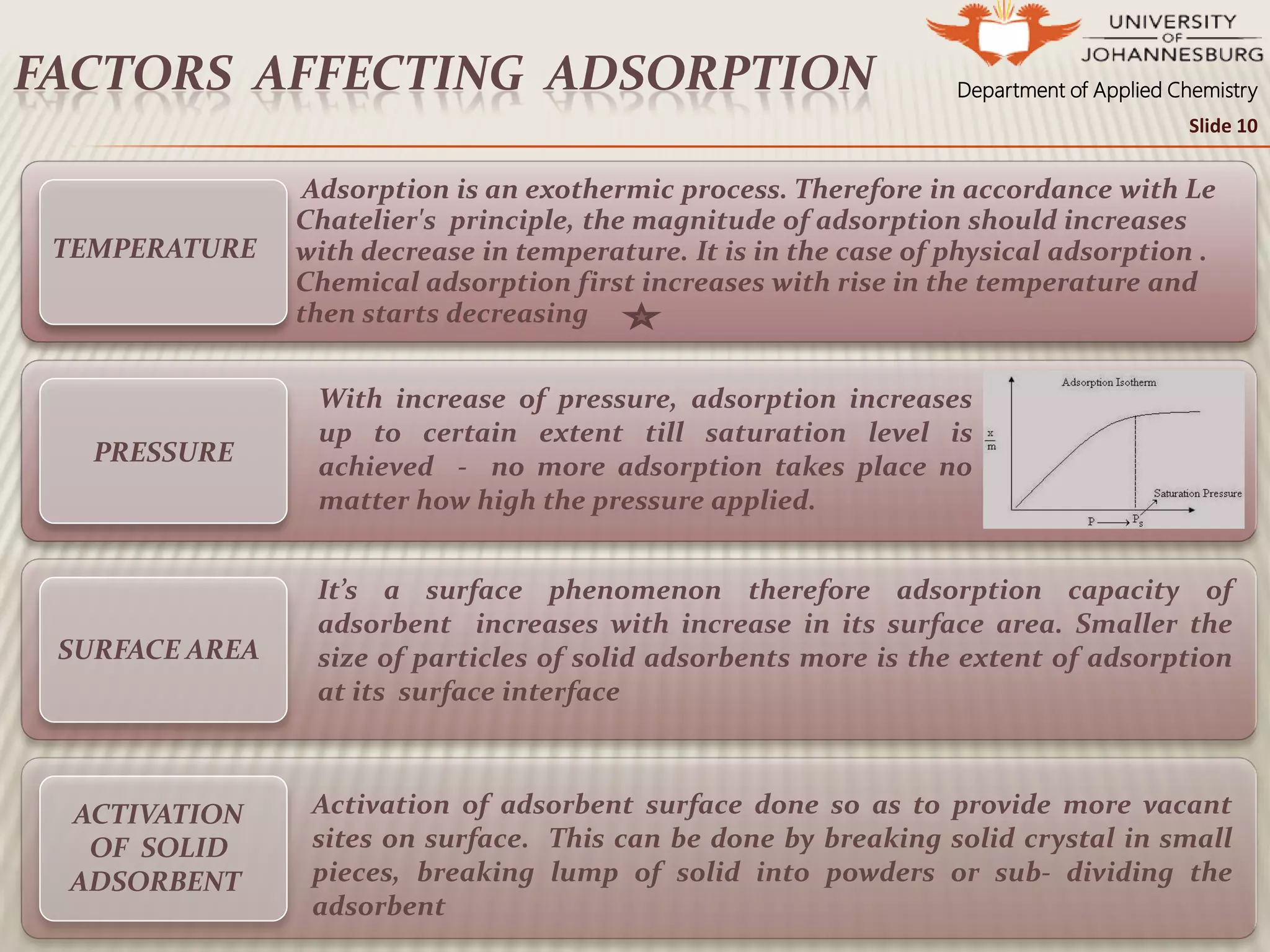

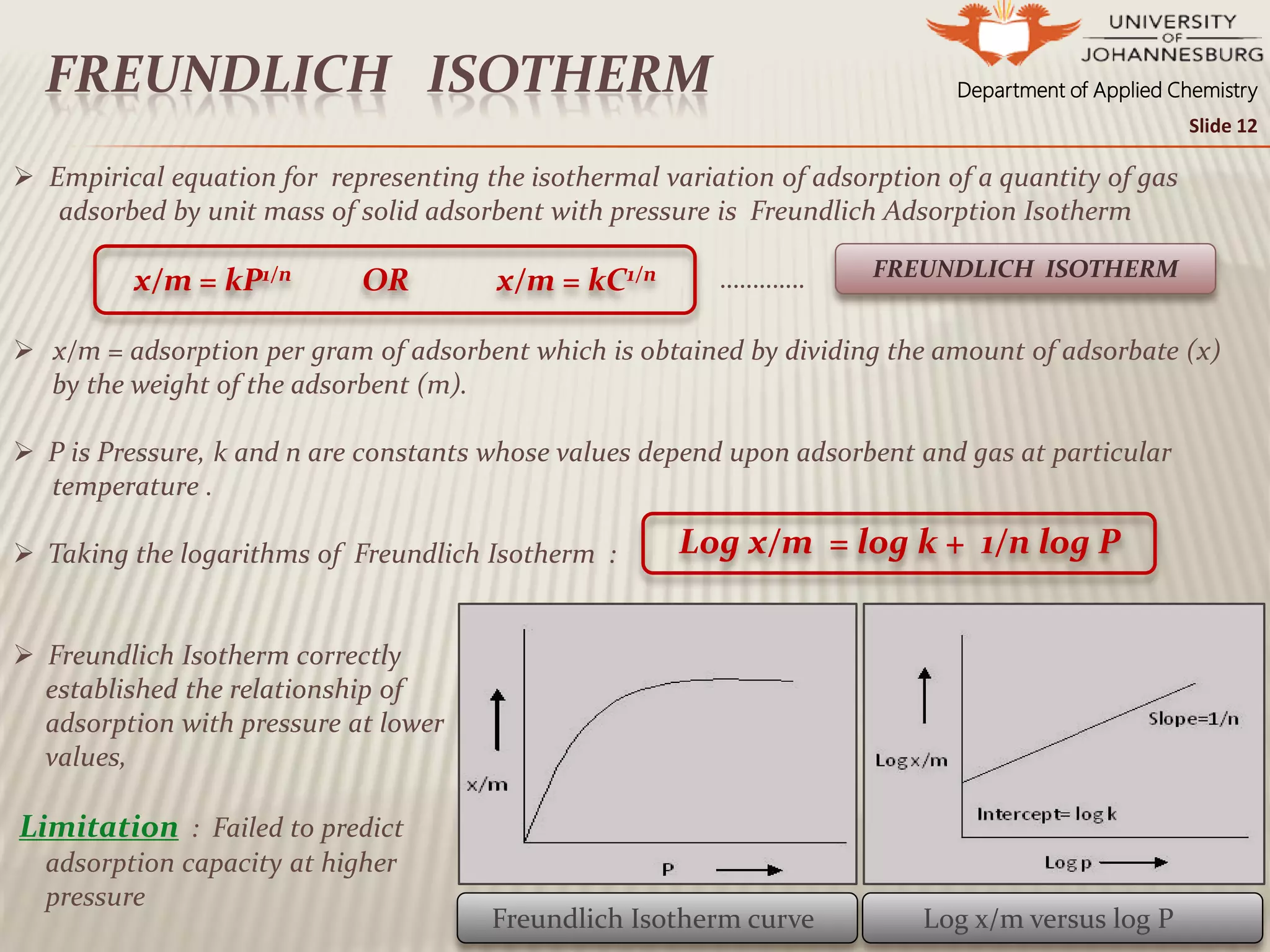

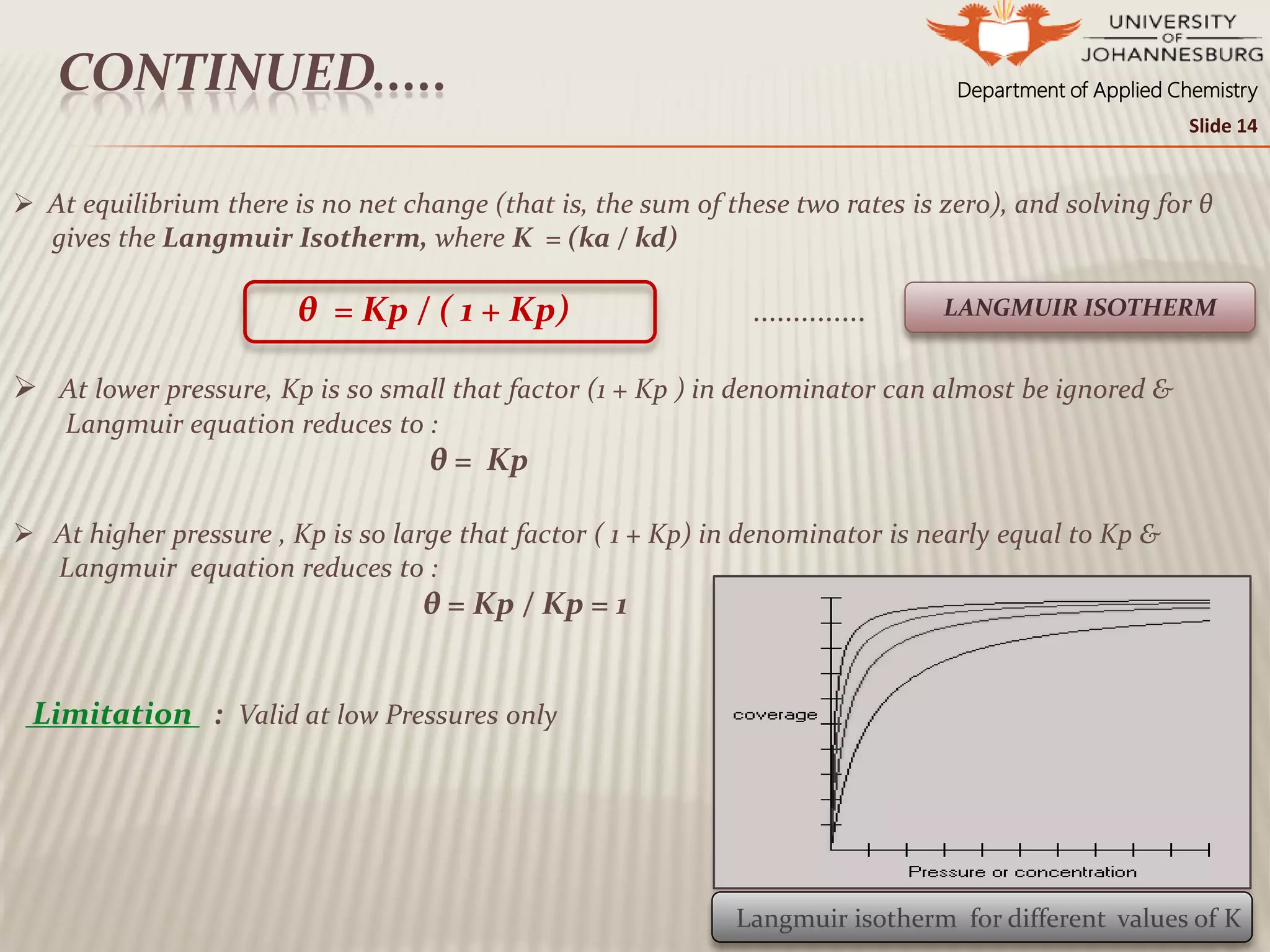
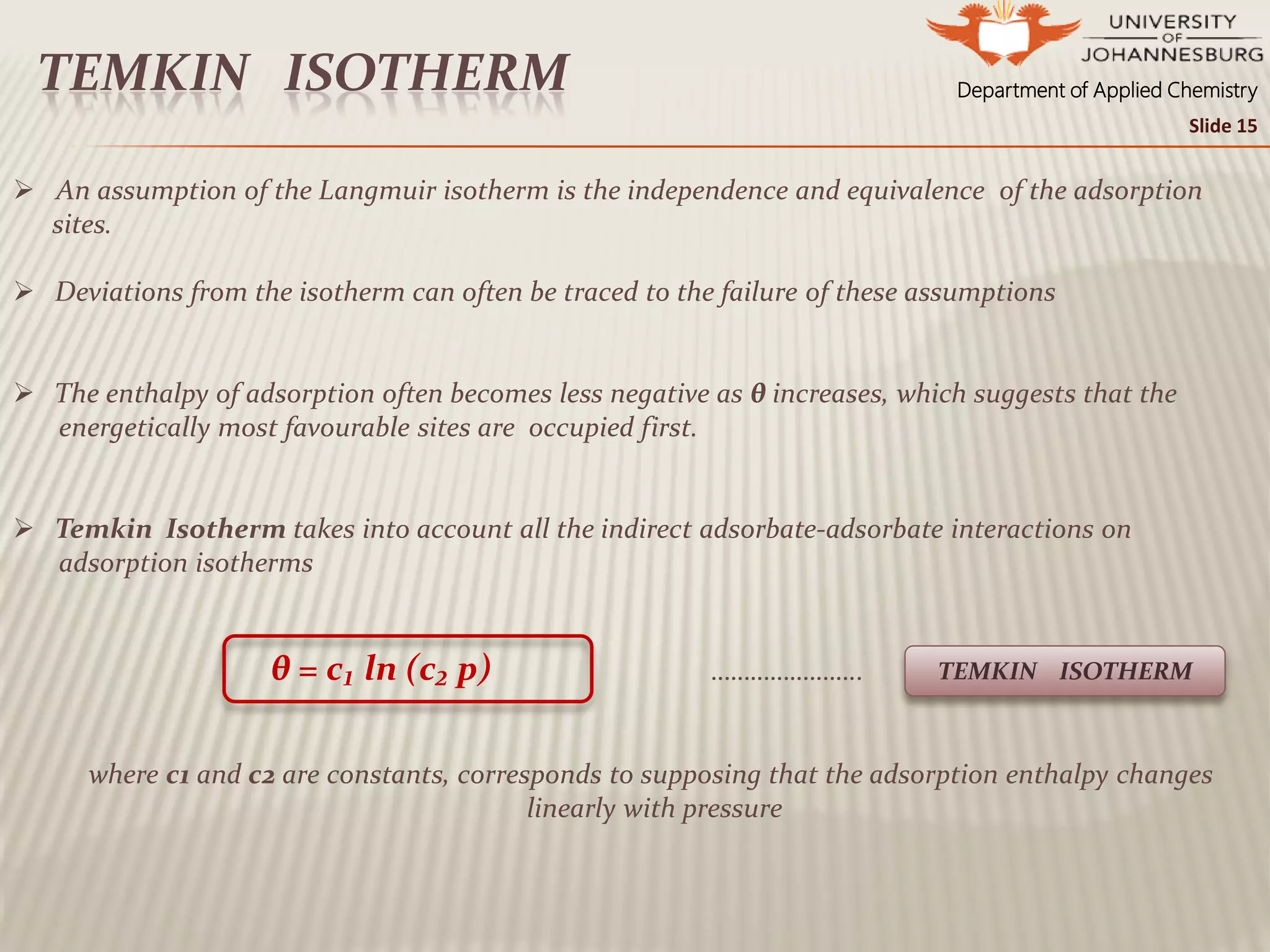
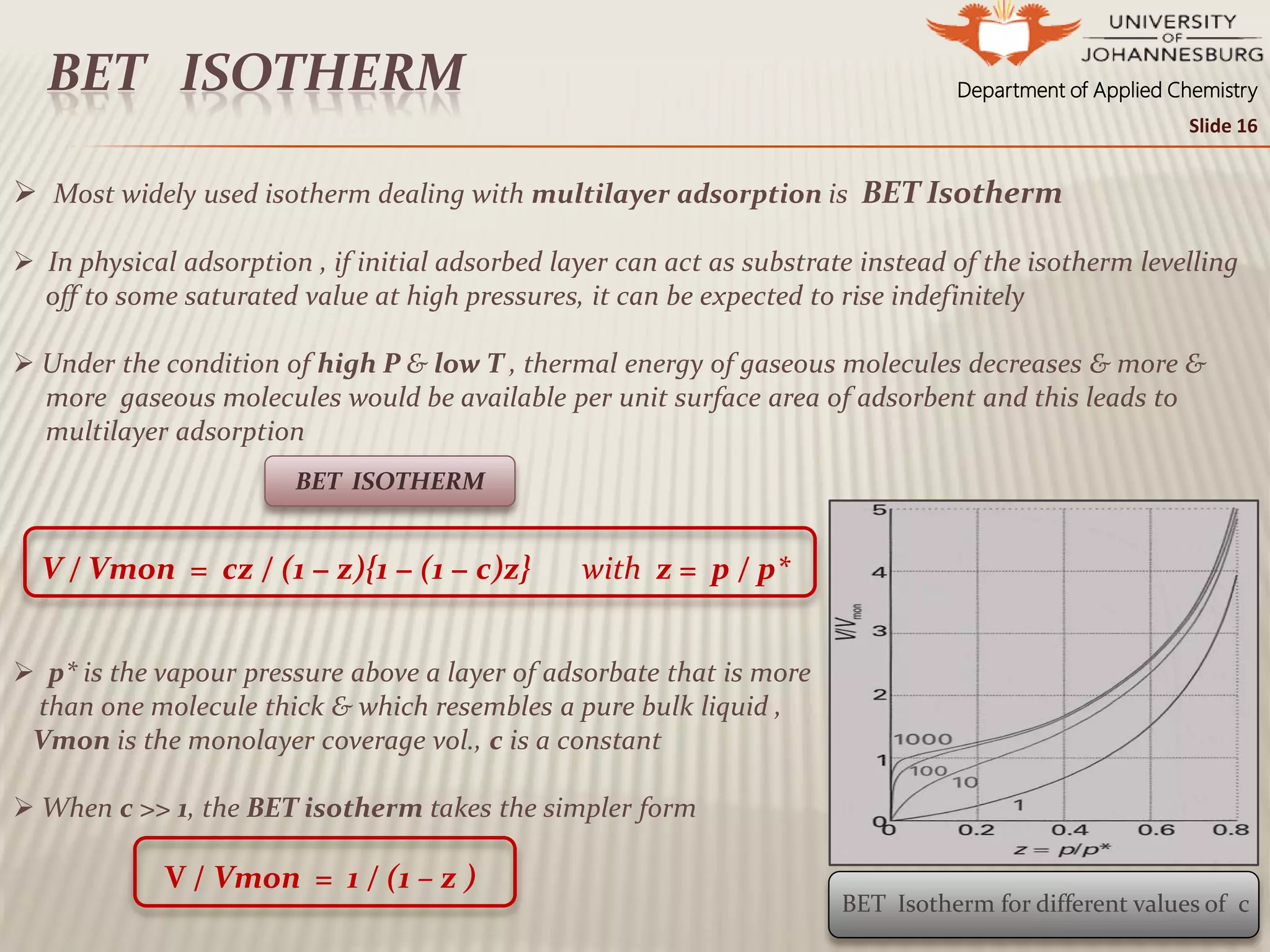
![Department of Applied ChemistryADSORPTION KINETIC MODELS
Adsorption reaction models developed to describe Adsorption Kinetics
• A Pseudo second order rate equation proposed is :
• (HP)0 equilibrium sites available on Peat, (HP)t equilibrium sites
available on Peat at time t , kp2 pseudo second order rate constant for
kinetic Model.
• Used in adsorption of metal ions, dyes, herbicides, oils, & organic
substances from
aq. solns
• A first-order rate equation to describe the kinetic process of liquid-solid
phase adsorption of oxalic acid and malonic acid onto charcoal
• Mostly used in adsorption of pollutants from wastewater in different
fields
• qe & qt (mg/g) Ads. cap,. at eqm & time t (min), resp. kp1 (min−1) is the
pseudo- first-order rate constant
for the kinetic model
Pseudo Second Order Rate Equation
Pseudo First Order Rate Equation
Slide 17
dqt / dt = kp1 ( qe – qt )
d (P)t / dt = kp2 [ (P)0 - (P)t ]2](https://image.slidesharecdn.com/adsorption-presentation-150214034230-conversion-gate02/75/Adsorption-presentation-17-2048.jpg)
